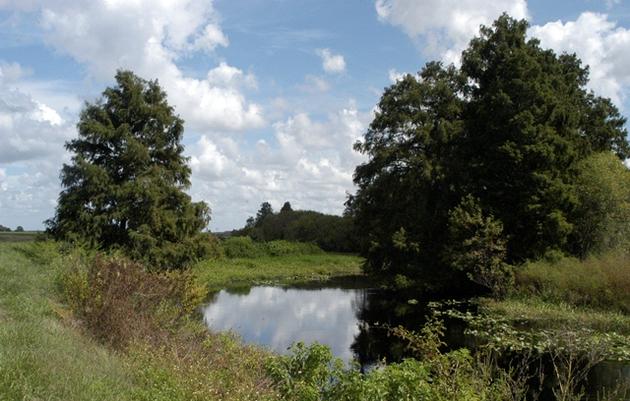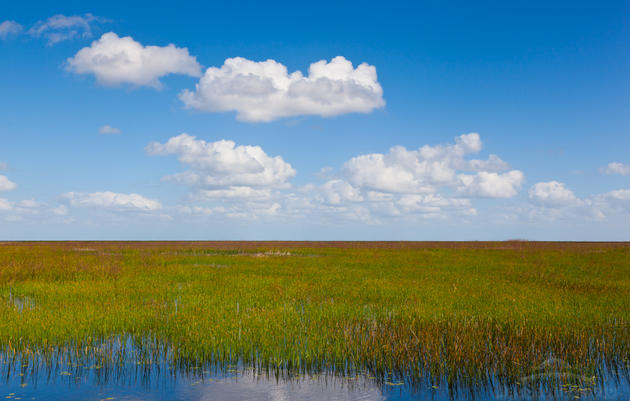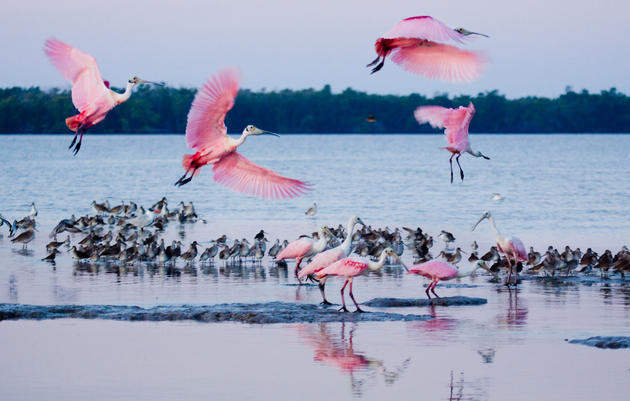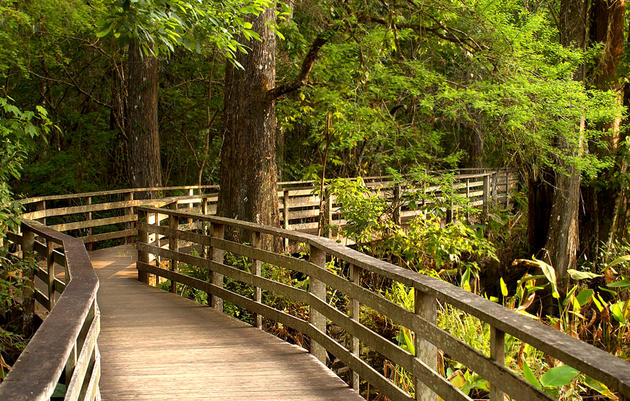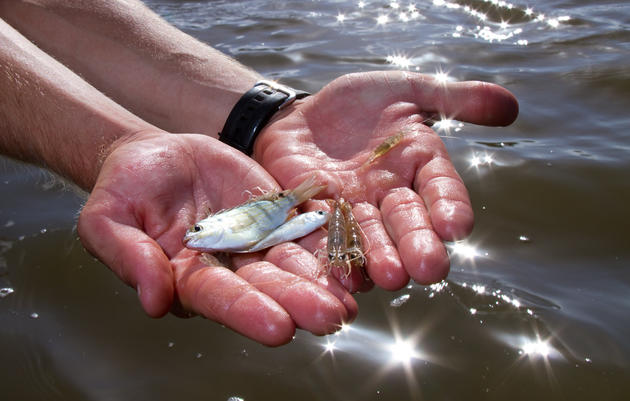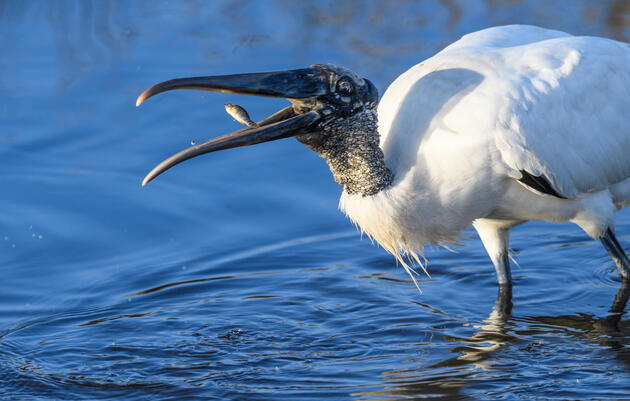Greater Everglades Ecosystem
Audubon has worked for over a century to protect and restore America's Everglades. Famous for its abundance of bird life, the Everglades has faced many challenges. From the murder of Audubon Warden Guy Bradley by plume hunters as he fought to protect some of the Everglades’ iconic species, to the nearly devastating changes from the 20th Century efforts to ditch, dike, and drain the watershed for development and agriculture, Audubon has led an unprecedented ecological intervention.
The most ambitious ecosystem restoration plan ever attempted is underway to provide the River of Grass with clean freshwater in the right place at the right time. Audubon's work to restore the Everglades is focused on implementing the Comprehensive Everglades Restoration Plan (CERP) and other restoration projects to achieve ecological benefits and restore the characteristic abundance of wildlife.
Our science and policy staff works throughout the ecosystem to ensure that sound science underpins plans for restoration and that projects stay focused on increasing target bird populations as a measure of success. The Audubon Florida state office and Florida’s 44 chapters work with other partners and local, state and federal decision makers to build widespread support for this effort.
Here are some of the overall goals of Audubon's Everglades work:
- Restore freshwater flows to Florida Bay through Everglades National Park to improve the conditions for the Roseate Spoonbill and other wading birds by reversing the effects of harmful flood control and water supply projects.
- Improve the hydrology of the Northern Everglades while improving the quality of water entering Lake Okeechobee, using the Southern Bald Eagle as an indicator of progress toward reaching these goals.
- Manage Lake Okeechobee in a way that balances the needs of consumptive users and the environment and reduce the pollutants flowing south from Lake Okeechobee and the Everglades Agricultural Area. Restore flows through the Water Conservation Areas that connect Lake Okeechobee and Everglades National Park using the Everglade Snail Kite, Roseate Spoonbill, and other wading birds as indicator species.
- Protect and restore the watershed of Audubon’s Corkscrew Swamp Sanctuary, the Big Cypress National Preserve and surrounding areas in the Western Everglades. Restoration and conservation activities in this area, which is a key part of the native habitat for the Wood Stork, can be measured by that species’ population in the region.
Related
Northern Everglades
The Northern Everglades encompasses the Lake Okeechobee watershed, the 3.3 million acre part of the ecosystem that serves as the headwaters of the Everglades.
Lake Okeechobee and the Central Everglades
Lake Okeechobee is the liquid heart of the Central Everglades.
Florida Bay
The Everglades Science Center at Tavernier was established in the Florida Keys in 1938.
Audubon's Corkscrew Swamp Sanctuary
Experience the heart of the Western Everglades.
Everglades Science
One of Audubon Florida’s greatest contributions for the Everglades is our research and monitoring that provides information about some of the most important issues related to the health of the ecosystem.
State of the Everglades Report
Get the latest news from the River of Grass in this bi-annual review.
Important Everglades Birds
| Attachment | Size |
|---|---|
| 342.88 KB | |
| 1.3 MB | |
| 537.77 KB | |
| 1.25 MB |
How you can help, right now
Donate to Audubon
Help secure the future for birds at risk from climate change, habitat loss and other threats. Your support will power our science, education, advocacy and on-the-ground conservation efforts.
Become a Monthly Donor
Donating monthly is flexible, easy and convenient and makes you a champion birds can count on, no matter the season.
Volunteers Needed
Florida's birds and wildlife need your time and energy. Learn how you can become a citizen scientist or a volunteer at one of our nature centers today.

